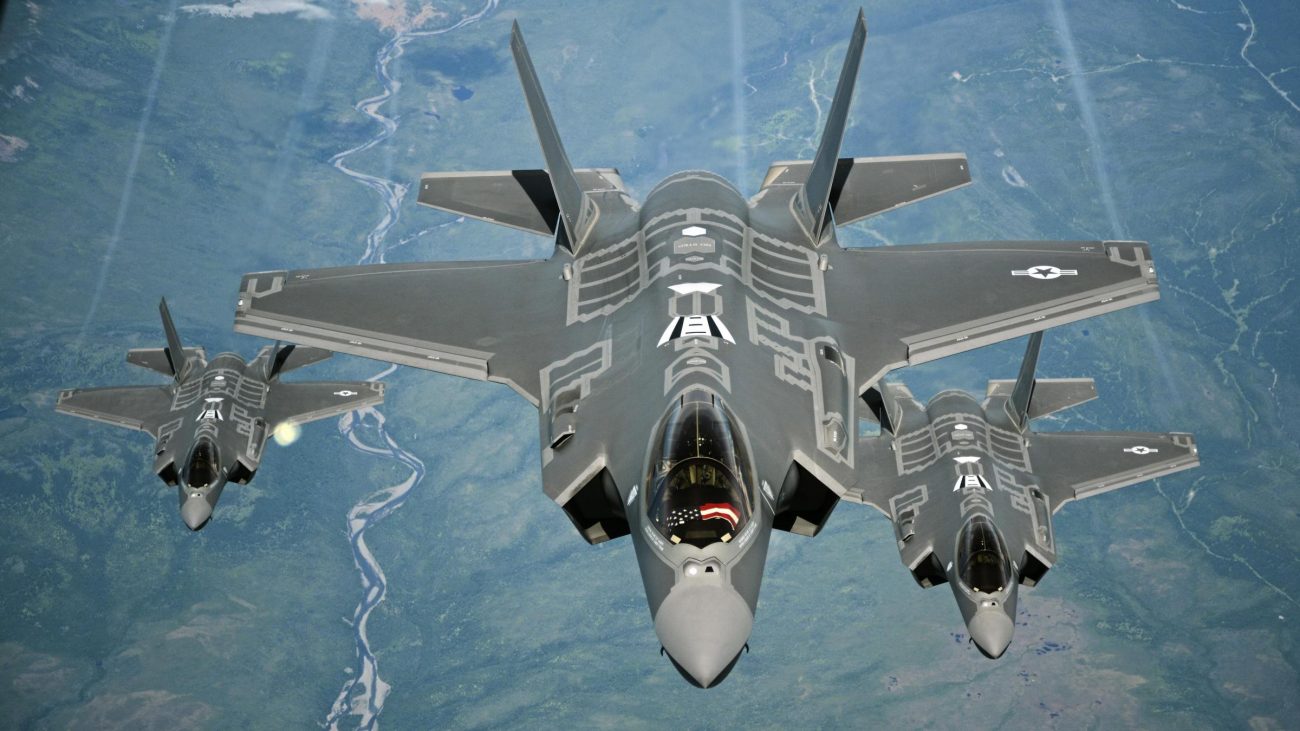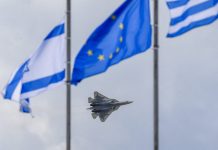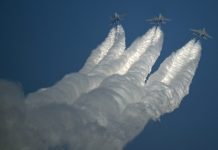The Lockheed Martin-manufactured F-35 Lightning II fighter jet has hit a snag, with the US State Department abruptly halting deliveries of the stealth aircraft upon discovering a bizarre ‘Chinese connection.’
Pentagon has temporarily suspended the delivery of F-35 fighter jets after the revelation that the raw materials used for a magnet in the aircraft were manufactured in China.
According to a statement released by Lockheed Martin on September 7, a magnet in the F-35’s Honeywell-manufactured turbomachine, an engine part that powers the starter/generator placed on the engine, was recently found to have been made using a cobalt and samarium alloy that is produced in China.
However, the alloy used in this component is magnetized in the United States, according to Lockheed Martin. Making the announcement, the manufacturer assured that the component from China was largely inconsequential as it could not transmit any information about the aircraft.
A spokesman for the F-35 Joint Program Office (JPO), Russell Goemaere, stated categorically that the component which is a magnet used in F-35 turbomachine pumps, “does not transmit information or harm the integrity of the aircraft and there is no performance, quality, safety, or security risks associated with this issue.”

However, the F-35 Joint Program Office has instructed the Defense Contract Management Agency to temporarily cease accepting F-35s owing to concerns over compliance with the Defense Federal Acquisition Regulation Supplement, or DFARS.
Lockheed Martin has already delivered more than 825 F-35s to the armed forces of 15 different countries.
Lockheed Martin further asserted that magnets produced from a different alloy employing components from the United States would be used going forward in the production of turbomachines.
Laura Siebert, another spokesperson for Lockheed Martin, told The War Zone that the turbomachine is a part of the Integrated Power Package (IPP), which is the main element of the power and thermal management system. The IPP provides conditioned bleed air for cooling aircraft systems and electrical power to start the engine.

Meanwhile, Goemaere noted that on September 2, the DFARS’s non-compliance with the alloy used in the magnets was formally disclosed to the F-35 JPO. “Further investigation is underway to understand the causal factors for the non-compliance and to establish corrective action,” he said.
The revelation comes after the manufacturer registered several successful fighter jet sales to foreign countries in recent months. In July this year, even the US Department of Defense awarded a contract to Lockheed Martin to build 375 F-35 fighter jets over three years.
The F-35 fighter jet, even though considered one of the best in the world, often runs into controversies. Not too long ago, the entire fleet of the fighter jet was abruptly grounded owing to some technical fault.
The F-35s Run With Controversies
The F-35 currently uses the F135 engine, which has been criticized for its insufficient cooling and power generation. As reported by EurAsian Times, the United States Air Force (USAF) and the Pentagon are still debating whether to construct an altogether new engine for the F-35 Lightning II stealth jet or significantly modify the F135 engine.
The US Air Force grounded its entire fleet of fifth-generation F-35 Joint Strike Fighter jets in July because a faulty component was found in its Martin-Baker ejection seat that could prevent pilots from safely being shot out of the aircraft during emergencies.
The F-35 has several significant problems that have complicated the aircraft’s mission. These were ultimately acknowledged as the final four “Category 1” defects by the F-35 Joint Program Office, which had initially named 13 such faults.
These flaws include a North Grumman AN/APG-81 Active Electronically Scanned Array (AESA) radar that couldn’t scan a wider area, a cockpit pressure regulation system that caused excruciating sinus pain, a night vision camera on the Helmet Mounted Display that displayed horizontal green lines, and an “inaccurate” 25 mm gun on some variants that also caused “vibration stress” on the airframe.

The aircraft has, nonetheless, achieved the reputation of being the most advanced fifth-generation stealth fighter jet. The F-35 has become a global favorite for its ‘super capabilities,’ with the war in Ukraine further driving its sales.
Greece and the Czech Republic decided to purchase these fighter jets in July. In addition, South Korea announced it was increasing its planned F-35 fleet by 50% to 60 aircraft. The US State Department has also approved a potential sale of F-35 fighter planes, ammunition, and supporting equipment to Germany for an estimated $8.4 billion.
The F-35 program officials recently revealed that the cost per flying hour for the F-35, across all users, has decreased by 50% in the past seven years and should decrease by another 35% in the next five years. They also stated that performance-based logistics is currently in the works to reduce operational costs further.
The new controversy is unwarranted and odd. However, the current suspension would not affect either the F-35 in-service fleet’s flying operations or the aircraft’s production by manufacturer Lockheed Martin.
The F-35 is composed of 300,000 parts produced by 1,700 suppliers, according to Lockheed Martin. However, it would certainly be a red line for the Pentagon to have even one of them manufactured by its arch-enemy China.
Lockheed Martin is still on target to deliver 148 to 153 F-35s this year, while the length of the suspension has not yet been determined. The business has delivered 88 units this year.
- Contact the author at sakshi.tiwari9555@gmail.com
- Follow EurAsian Times on Google News




